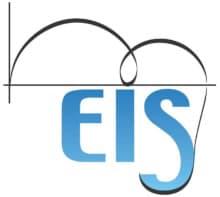
Physicists in the US and China have devised a technique for making reliable measurements of the magnetic properties of materials held under very high pressures. Their method could help researchers discover materials that are superconductors at high temperatures and high pressures.
High-temperature superconductivity has hit the headlines regularly in the past year or two – but often for the wrong reasons. Several claims of materials that superconduct at close to or even above room temperature have been disputed, and some have been withdrawn.
A part of the problem is that these materials are studied at very high pressures in diamond anvil cells (DACs). A DAC compresses a tiny sample between two diamond teeth, which makes it very difficult to observe the characteristic signatures of superconductivity. Indeed, it is even tricky to know the detailed atomic structure of such samples.
Typically, claims of superconductivity must be supported by two pieces of evidence. One is an abrupt drop to zero in the resistivity of the material as the superconducting transition occurs. The other is the Meissner effect, which is the expulsion of a magnetic field from a material when it enters the superconducting state.
High-pressure challenge
Seeing these simultaneously at high pressure in a DAC is challenging, says Norman Yao of Harvard University. “How do you stick a probe into this high-pressure chamber? You just don’t have access.” The resistivity of the sample can be measured by installing tiny leads. But to measure magnetic effects, researchers generally surround the entire DAC with a solenoid induction coil, which just gives an average for the whole sample.
The problem is particularly acute for materials such as cerium and lanthanum superhydrides, which have been the focus of much of the excitement about room-temperature superconductors. They are usually made using a laser to heat a flake of metal in the presence of a hydrogen-rich compound. But it can be hard to know where, at high pressure, the desired hydride phase has formed and where it has not. Yao explains that this is why experimental runs fail more often than not, because there is no continuous superconducting region joining one lead to another.
If the sample is highly inhomogeneous, it also complicates the interpretation of the average magnetic behaviour data collected by an induction coil. This is particularly tricky because those signals are generally tiny compared with the background field. As a result, claims of superconductivity at high pressure are often contentious.
Three years ago, Yao’s team and others showed that local magnetic fields can be measured at high resolution using the DAC diamonds themselves. This is done by using nitrogen vacancy (NV) lattice defects within the diamonds. In these defects, two adjacent carbon atoms are replaced by a nitrogen atom and a vacant lattice site.
Split spin states
Each NV has a quantum spin that interacts with magnetic fields. This interaction is observed using a technique called optically detected magnetic resonance. When laser light is shone on an NV, it causes the emission of fluorescent light. If a microwave signal at a specific resonant frequency is also applied to the NV, it puts the spin into a specific state and this reduces the amount of fluorescent light emitted. If a magnetic field is also present, the energy levels of that spin state are split. This means that the reduction in fluorescence occurs at two distinct microwave frequencies – and the separation between those frequencies is proportional to the magnetic field strength.
In principle this technique could be used to perform spatially-resolved magnetometry on a DAC sample using implanted NV centres near the tip of a diamond tooth. The fluorescence is created by shining a laser into the back end of a diamond.
“An inherent advantage of the NV technique is its high spatial resolution in measuring the perturbation of the applied magnetic field by the superconducting phase, as opposed to the averaging effect for measurements over the entire sample”, says high-pressure expert Mikhail Eremets of the Max Planck Institute for Chemistry in Mainz, Germany. “This allows the use of much smaller samples and the potential to reach higher pressures,” adds Eremets, who has worked on high-temperature superconductivity in pressurized lanthanum superhydride.
Deformed defects
However, there is a problem with this magnetometry technique because high pressure deforms the NV defects in a way that gradually kills off the magnetometry signal. Previously, fluorescence from such NV sites was found to disappear around pressures of 50–90 GPa, which is too low to form the superconducting phases of the superhydrides.

Diamond sensors probe matter at high pressures
Now Yao and colleagues have found a solution to this pressure problem that is simple in principle but challenging to engineer. If the upper face of the diamond tooth is cut along one particular crystallographic direction, the NV sites are aligned in this direction. The result of this symmetry is that pressure does not affect the fluorescence. This has allowed the team to detect superconductivity within specific regions, as small as a few microns, of a sample of cerium superhydride at a temperature of around 90 K and a pressure of 140 GPa.
Using this crystalline orientation could help resolve past controversies and avoid some future ones, the researchers say. It could also help researchers determine which sample synthesis conditions work best. Previously, says Yao, it was difficult to determine the exact nature of a sample. But now, if the target material has some magnetic response like a Meissner effect, it should be possible to spot exactly where it is in the sample and so to deduce how effective different synthetic strategies are.
“This imaging capability of the technique will be especially useful for in situ characterization of the inhomogeneities that are present in these high-temperature superconductors, including those that are stable near ambient pressures”, says materials scientist Russell Hemley of the University of Illinois at Chicago, who was not involved in the work.
The research is described in Nature.



